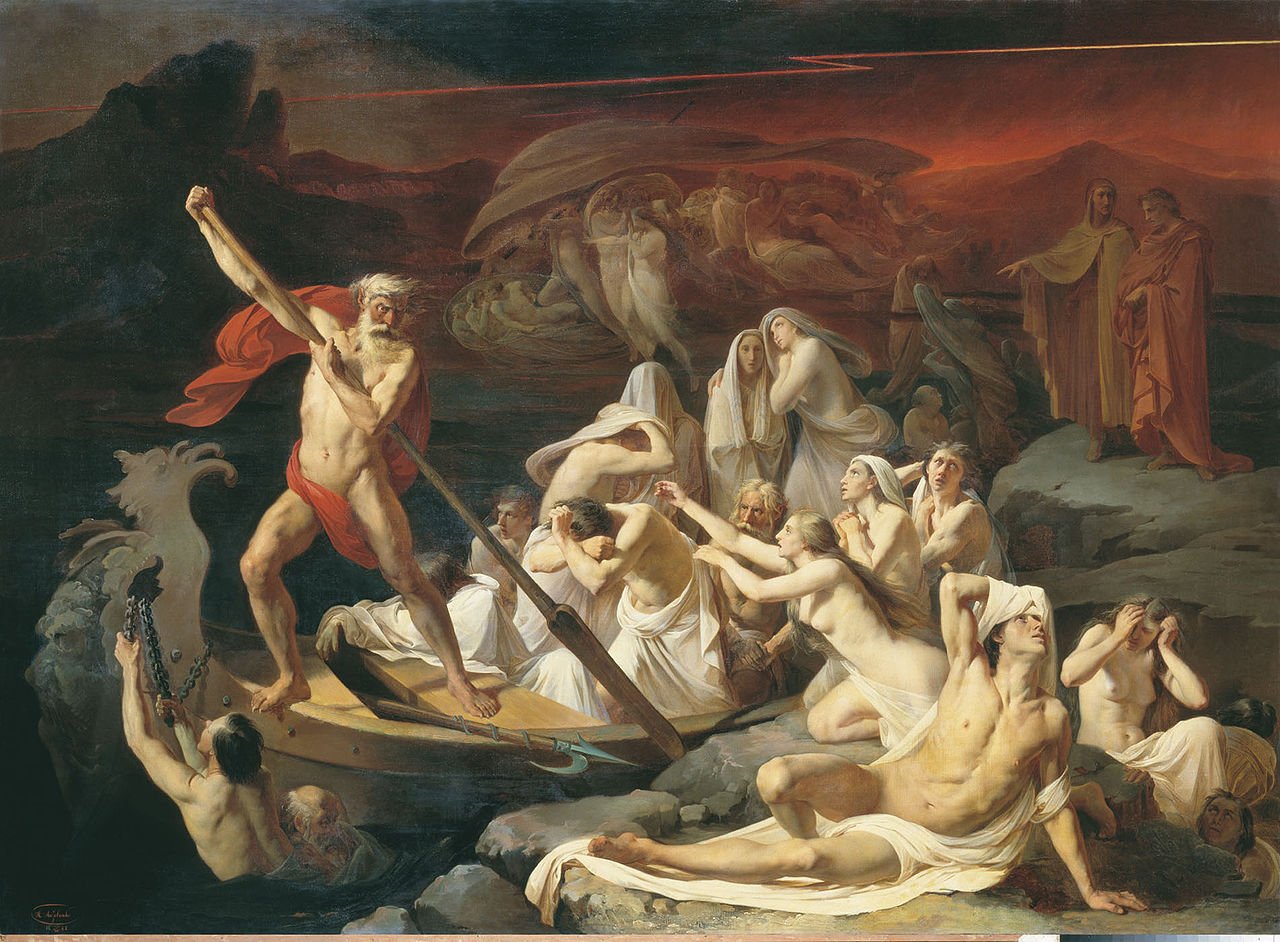In the realm of Greek mythology, rivers were never just rivers. They were sacred forces, living entities, and eternal symbols of boundaries that humans could not cross without consequence. Among them, the most feared and revered was the River Styx, a dark and powerful stream that wound its way through the Underworld. More than water, it was the very embodiment of separation—the dividing line between the living and the dead, between hope and despair, between the mortal and the divine.
The Styx was not just any river. In myth, it was the great boundary of Hades, a current that no mortal boat could sail upon without the ferryman Charon’s guidance, and one that no god could defy without facing the gravest consequences. To the Greeks, the Styx was both a passage and a prison, a river that carried souls to their final resting place and bound the gods themselves in unbreakable oaths.
To speak of the Styx is to step into a world where water becomes fate, where promises echo for eternity, and where even the immortals trembled before its power.
The Origin of the Styx
In Hesiod’s Theogony, one of the earliest works of Greek myth, the River Styx is described as a primordial entity. She was not merely a river but a goddess—Styx, daughter of Oceanus and Tethys, two of the great Titans who personified the endless waters of the world. Unlike the gentle streams of the earth, Styx was fierce, cold, and unyielding, flowing with a force that represented the raw and binding nature of divine law.
During the great Titanomachy—the cosmic war between the Titans and the Olympians—Styx played a crucial role. When Zeus called upon the gods to choose sides, Styx was the first to answer, bringing her children with her: Nike (Victory), Zelus (Zeal), Kratos (Strength), and Bia (Force). These personifications of power would become constant companions of Zeus, forever embodying his reign. As a reward, Zeus honored Styx above all rivers, decreeing that from that day forward, the most sacred oaths of gods would be sworn upon her waters.
Thus, the River Styx was born not just as a boundary of the Underworld, but as the very foundation of divine truth.
The Geography of the Underworld
Greek mythology does not describe the Underworld with exact maps, but poets and philosophers painted vivid portraits of its rivers and regions. The Styx was often described as encircling Hades nine times, weaving through caverns of shadow and mist. It was one of five rivers in the land of the dead:
- The Acheron, the river of woe.
- The Cocytus, the river of lamentation.
- The Phlegethon, the river of fire.
- The Lethe, the river of forgetfulness.
- And the Styx, the river of hatred, binding gods and mortals alike.
Among them, Styx held the highest authority. Its waters were said to be so toxic and divine that even touching them could be fatal to mortals. For the souls of the dead, it was a pathway; for the gods, it was a chain.
The geography of Styx was as much spiritual as physical. It marked the liminal space between what was and what would be, a reminder that once a crossing was made, there could be no return.
Oaths of the Gods
Perhaps the most extraordinary aspect of the River Styx was not its role in ferrying the dead but its role in binding the living gods. For the Olympians, whose power made them seemingly invincible, there was one force they could not escape: an oath sworn upon the Styx.
The gods were not known for honesty. They quarreled, deceived, and schemed. Yet when a promise was sealed by the waters of Styx, it became unbreakable. To swear by the river was to invoke a truth so binding that even Zeus himself was powerless to overturn it.
According to myth, if a god swore falsely on the Styx, the punishment was severe. They would be struck down, deprived of nectar and ambrosia—the food of immortality—for nine years, cast out from the company of the gods. During this exile, they would wander, voiceless and powerless, stripped of their divine privileges. Only in the tenth year could they return to Olympus, scarred by shame and silence.
This punishment reveals something extraordinary: that the Greeks imagined even gods had limits. The Styx was not just a river of the dead—it was a cosmic force of justice, a reminder that no being, mortal or divine, could escape the weight of truth.
Famous Myths of the Styx
The River Styx flows through countless stories in Greek mythology, shaping destinies with its dark waters. Among the most famous are tales of oaths, invulnerability, and betrayal.
One of the most enduring myths is that of Achilles, the greatest warrior of the Trojan War. His mother, the sea goddess Thetis, sought to make him immortal. To protect him, she dipped the infant into the Styx, and its waters made his body invulnerable to weapons. Yet she held him by his heel, which remained untouched. That small vulnerability became his undoing, for Paris’s arrow, guided by Apollo, would one day strike his heel and bring about his death. From this story, the term “Achilles’ heel” has endured as a symbol of fatal weakness.
Another tale tells of Persephone, daughter of Demeter, who was abducted by Hades and taken into the Underworld. When Hermes and Demeter demanded her return, oaths were sworn upon the Styx to ensure fairness. The compromise that Persephone would spend part of the year in Hades and part with her mother was sealed by this sacred river, binding the seasons themselves to its authority.
In Homer’s Iliad, the gods frequently swear upon the Styx during moments of great consequence. When Hera schemes against Zeus, when gods take sides in the Trojan War, their promises gain force only when tied to the river’s waters.
Through these myths, the Styx emerges as a recurring character—not merely a river, but a voice of truth and consequence that threads itself through the lives of mortals and immortals alike.
Symbolism of the River Styx
Beyond its literal role in myth, the Styx is rich with symbolism. To the ancient Greeks, it represented boundary and permanence. Crossing it meant leaving behind one world for another, while swearing upon it meant binding oneself beyond all escape.
As the river of hatred, the Styx also symbolized the darker currents of existence. It was not a river of peace or forgiveness but one of bitterness, echoing the finality of death and the seriousness of divine oaths. Its name itself, Styx, comes from the Greek word stugein, meaning “to hate” or “to abhor.”
Yet in its terrifying authority, the Styx also symbolized order. Without it, even the gods might have descended into chaos, bound by nothing. The river’s harsh justice provided stability to the cosmos, ensuring that promises, once made, would not be broken without dire consequence.
The Styx was also a metaphor for irreversibility. Just as death cannot be undone, just as words cannot be unsaid, so too could an oath sworn on the Styx never be recalled.
The River in Ancient Belief and Ritual
For the Greeks, myth was not just story—it was belief. The River Styx held such a powerful place in imagination that it influenced rituals and practices. While mortals could not literally swear upon the Styx, oaths were considered sacred across Greek culture, and perjury was among the most serious offenses.
In some accounts, the Styx was thought to have physical counterparts in the natural world. Near Arcadia in the Peloponnesus, there was a spring called “Styx water,” cascading from a high cliff. The locals believed it was connected to the underworld river, and its waters were feared as poisonous and divine. Alexander the Great was even rumored, centuries later, to have been poisoned by water drawn from the Styx.
These beliefs remind us that for the Greeks, myth and reality intertwined. The river was both a story of the gods and a presence that haunted the landscape.
The Styx in Literature and Philosophy
The River Styx has flowed far beyond the boundaries of Greek myth, entering the streams of philosophy, literature, and art. Plato spoke of it in his dialogues, noting its role in shaping the souls of the dead. Later Roman poets, including Virgil in the Aeneid, gave vivid descriptions of the river as Aeneas journeyed through the Underworld.
In Dante’s Inferno, the Styx reappears as a swamp of the wrathful, showing how medieval imagination transformed Greek myth into Christian allegory. Later still, Romantic poets and modern authors have invoked the Styx as a symbol of ultimate truth, eternal boundary, and the gravity of promises.
The river’s resonance lies in its universality: every culture has imagined a boundary between life and death, and every human heart knows the weight of promises.
The River Styx Today
Though centuries have passed since the ancient Greeks poured libations to the gods, the Styx still holds a place in our imagination. It surfaces in literature, film, and art as a symbol of the ultimate crossing, the line between this world and the next. It appears in fantasy novels, video games, and even modern music, proof that its power endures.
But beyond its popular echoes, the Styx reminds us of something timeless: that promises matter, that death is a reality no one escapes, and that boundaries—whether physical, moral, or spiritual—are fundamental to existence.
The Eternal Flow
The River Styx is not just myth—it is metaphor, morality, and memory. It flows through Greek mythology as the most sacred of boundaries, feared by mortals and revered by gods. In its dark currents lie the stories of invincible heroes, the binding of divine oaths, and the eternal separation between life and death.
It teaches us that no power, not even divine, exists without accountability. It warns us that every promise carries weight, and every crossing carries consequence.
And so, in the imagination of the ancients and the hearts of modern readers, the Styx still flows—dark, eternal, and binding. It is the river of oaths, the river of hatred, and the river of truth.
It whispers to us across time, reminding us that life is sacred, death is certain, and words—once spoken—can never be recalled.






